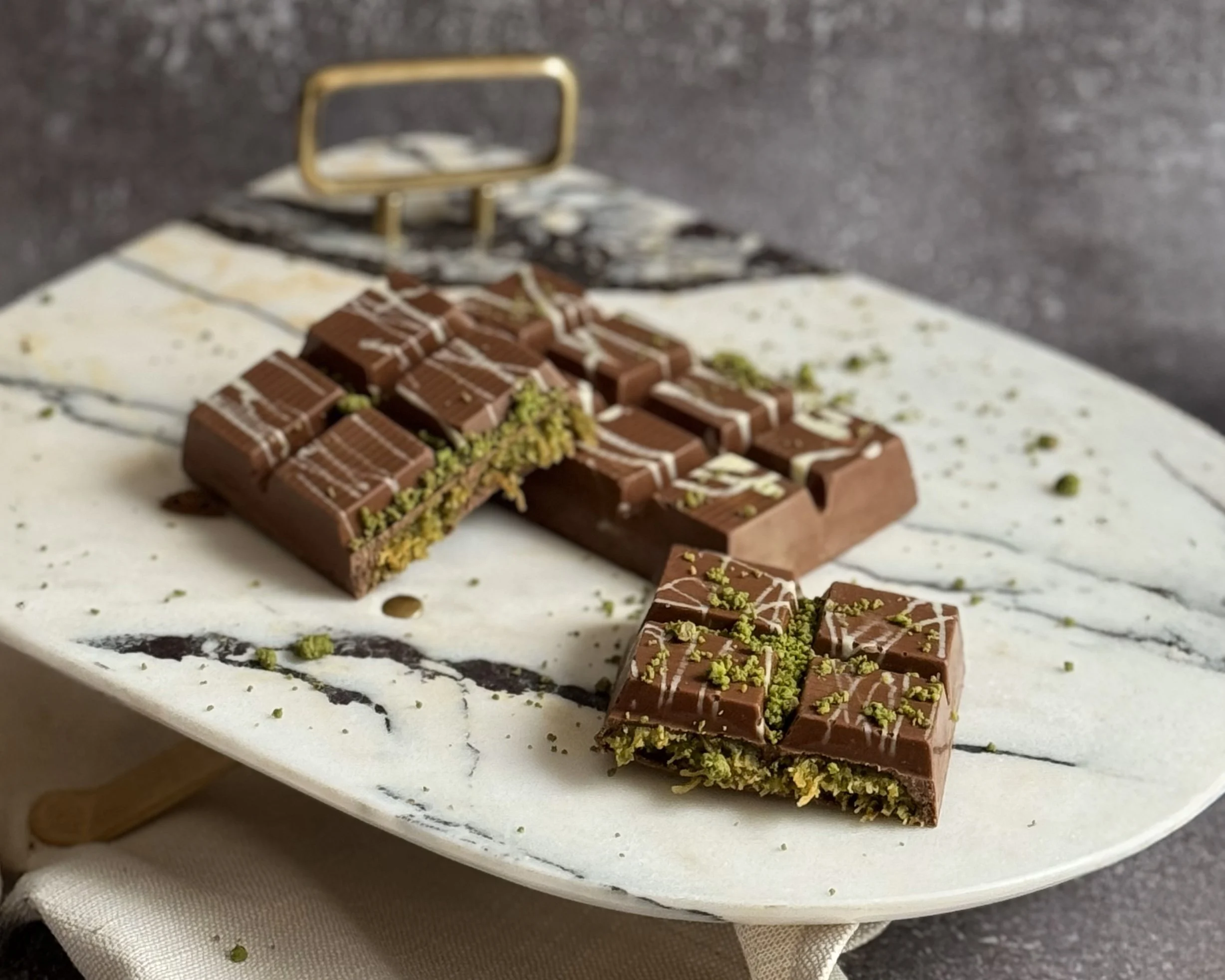Introduction
Dubai’s chocolate scene has exploded, not because of the chocolate itself but due to brilliant marketing that’s made brands like FIX Dessert Chocolatier, Al Nassma, and Bateel global names. These companies have used social media, scarcity tactics, and luxury branding to turn a local treat into a billion-dollar industry, creating wealth for savvy entrepreneurs. This article cuts through the hype to show how marketing strategies have driven this trend, making Dubai chocolate a case study in modern success.

How Marketing Turned Dubai Chocolate into a Global Phenomenon
Explore the marketing tactics behind Dubai chocolate’s rise:
Social Media Buzz
Dubai chocolate’s global fame kicked off on TikTok and Instagram. A viral video showcasing its pistachio cream and knafeh filling racked up millions of views, sparking a frenzy. Influencers jumped in, posting reviews that fueled the hype. FIX Dessert Chocolatier leaned into this, encouraging user-generated content to amplify reach without a massive ad budget. This organic buzz turned the chocolate into a must-have, proving social media’s raw power in modern marketing.
Scarcity Tactics
Scarcity was a game-changer. Initially, FIX sold Dubai chocolate only through a UAE delivery app at limited hours, making it feel exclusive. This created a fear of missing out (FOMO), driving demand sky-high. Even as availability grew, brands kept the exclusivity vibe with limited-edition flavors, keeping consumers hooked. This tactic wasn’t about the chocolate—it was about making people feel they needed it now.
Luxury Branding
Dubai chocolate was pitched as a luxury good from day one. Brands like Bateel and Al Nassma used sleek packaging and premium pricing to align with Dubai’s opulent image. This wasn’t just candy—it was a status symbol, perfect for gifting or flaunting. The high-end branding justified prices over $100 for a box, appealing to affluent buyers and tourists eager for a piece of Dubai’s glamour.
Cultural Appeal
The chocolate’s Middle Eastern roots, with ingredients like knafeh and tahini, gave it an authentic edge. Brands spun stories about Dubai’s culinary heritage, making the chocolate a cultural artifact. This narrative resonated globally, appealing to consumers craving exotic, authentic experiences. It wasn’t just about taste—it was about owning a slice of Dubai’s story.
Event-Driven Hype
Brands like FIX created buzz with pop-up events and exclusive launches, especially at high-traffic spots like Dubai Duty Free. These events turned buying chocolate into an experience, drawing crowds and media attention. Limited-time offerings during Ramadan or travel seasons made the chocolate a hot souvenir, boosting sales and brand visibility.
Wealth Impact
The marketing machine behind Dubai chocolate has minted money. In Q1 2025, brands like Fix Chocolate, Bateel, and Al Nassma sold 1.2 million bars at Dubai Duty Free, raking in Dhs 80.4 million ($22 million). This cash flow has enriched entrepreneurs, created jobs, and spurred economic growth. Global expansion into markets like the UK and US has opened new revenue streams, cementing Dubai chocolate as a wealth creator.
Conclusion
Dubai chocolate’s success isn’t about cocoa—it’s about marketing genius. Social media, scarcity, luxury branding, cultural storytelling, and events have turned a treat into a global cash cow, making entrepreneurs rich and boosting Dubai’s economy. As competition heats up, only those who keep pushing creative marketing will stay on top. This trend shows that in today’s world, a good product needs great marketing to make millions.